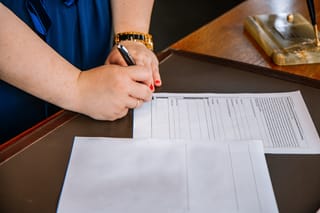In Short
-
Conduct a thorough search to ensure your logo is unique and not already registered.
-
Consider registering both your business name and logo to maximise protection.
-
Choose the right trade mark classes and understand the filing options, including the Madrid Protocol for international registration.
Tips for Businesses
Before applying for an international trade mark, check your logo’s uniqueness using global databases and social media platforms. Register both your business name and logo for broader protection. Choose the correct trade mark classes to ensure complete coverage, and explore the Madrid Protocol for a cost-effective registration process across multiple countries.
Having a trade mark registered overseas is important to internationally expanding your business. International trade marks can include logos, which are key symbols and visual representations of your brand. By registering your logo as a trade mark abroad, you can effectively prevent others from using your logo without your authorisation. This article will outline some important points to consider in the process of registering your logo as an international trade mark.
Check Your Logo Does Not Already Exist
It is important to conduct a comprehensive search of existing international trade marks, especially in the country or state that you want to register within. A useful tool is the World Intellectual Property Organization (WIPO) Global Brand Database, which allows you to search existing trade marks by logo. For added security, you should also conduct a general search of social media platforms, the internet and other intellectual property (IP) search databases.
If you find something similar to your idea under an alike brand in your target market, this may prevent your use and registration of the trade mark in that market.
Register Your Business Name as a Trade Mark
Most small businesses register their business names and logos as trade marks. If you have the budget to file only one trade mark application, you need to decide whether your business’ name or logo needs to be protected first.
Generally, the name of your business is registered first as a trade mark (a word mark) as it provides the broadest level of protection. However, registering both word and logo versions of your trade mark at the outset can avoid the potential costs that accompany trade mark disputes. Ultimately, if you intend to trade internationally, it is recommended that you protect both the name of your business as a word mark and your distinctive logo.
Continue reading this article below the formPick the Right Classes
The Nice classification system is used internationally to group goods and services together. It has 45 trade mark classes, which are different areas of trade your business can operate within. When applying, you will have to select the class or classes appropriate to your activities under the trade mark. When applying, you should choose all applicable classes carefully. This is important to ensure total protection, as your trade mark will only be protected within the classes you select.
If you decide after applying that you should have selected additional classes, you will need to submit another application. You should consider seeking legal assistance if you find selecting classes difficult. This will ensure your application is both cost and time-effective.
Apply For an International Trade Mark
Many businesses would like to register a ‘global’ trade mark, which is not possible. However, there are systems in place that facilitate trade mark registration in multiple countries, such as the Madrid Protocol.
There are generally two options to protect your trade mark internationally:
- File an application through the Madrid Protocol.
- File applications directly in each required country.
The Madrid Protocol
The Madrid Protocol is a system that facilitates trade mark registration in multiple countries. All registrations are completed through a single application administered by WIPO. Where you require multiple countries, the Madrid Protocol can provide a simpler and more cost-effective means to secure international registration.
However, not all countries are available through the Madrid Protocol. It is important to speak with an experienced trade mark professional about the best-suited approach to your business.
Your registered international trade mark with members of the Madrid Protocol is valid for 10 years. As in Australia, you can renew your registration at the end of this 10-year period. You can file a renewal request with WIPO from three months before the interational trade mark expires up until six months after that expiry date. Depending on where you registered the trade mark and how many classes you registered it under, fees for renewal may vary.
Direct Applications
Where the Madrid Protocol is not appropriate or available, you can apply for trade mark protection separately in each required country. This usually involves engaging a local agent to attend to the filing of the application. As such, the fees for direct applications in multiple countries can be higher than filing through the Madrid Protocol. Other requirements may also apply, such as providing a Power of Attorney to your local agent and legalising documents at additional cost.
Use Your Logo Consistently
Your logo is a critical element in building a strong visual identity for your brand. Therefore, you should be consistent in the way you use it, whether online or offline. It is also a good idea to ensure your logo aligns with your message and brand values. Doing so will prevent customer confusion and build a strong brand association. Ensuring consistency in the use of your logo will improve your international recognition and help your business appear more professional.

This guide explains the essentials of trade marks and the steps required to register a trade mark.
Key Takeaways
Registering your logo internationally is a great way to protect your brand and increase the value of your business. To ensure you effectively register your logo as an international trade mark, you should consider:
- whether your logo is unique;
- protecting your business name via word mark alongside your logo;
- choosing the right classes for your trade mark;
- possible filing processes; and
- ensuring consistent logo use..
If you need help with international trade mark registration for your logo, our experienced trade mark lawyers can assist as part of our LegalVision membership. For a low monthly fee, you will have unlimited access to lawyers to answer your questions and draft and review your documents. Call us today on 1300 544 755 or visit our membership page.
Frequently Asked Questions
How do I check if my logo already exists as a trade mark?
Conduct a comprehensive search using the World Intellectual Property Organization (WIPO) Global Brand Database and other intellectual property databases. Additionally, search social media platforms and the internet to ensure your logo is unique in your target market.
Should I register my business name or logo first as a trade mark?
It is generally recommended to register your business name (as a word mark) first, as it provides broader protection. However, if possible, register both your business name and logo to avoid potential trade mark disputes.
We appreciate your feedback – your submission has been successfully received.










